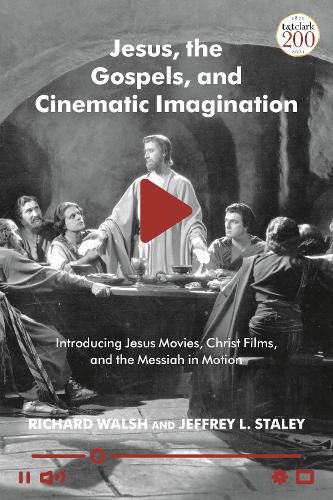Readings Newsletter
Become a Readings Member to make your shopping experience even easier.
Sign in or sign up for free!
You’re not far away from qualifying for FREE standard shipping within Australia
You’ve qualified for FREE standard shipping within Australia
The cart is loading…






Jesus films arose with cinema itself. Richard Walsh and Jeffrey L. Staley introduce students to these films with a general overview of the Jesus film tradition and with specific analyses of 22 of its most influential exemplars, stretching from La vie du Christ (1906) to Mary Magdalene (2018). The introduction to each film includes discussion of plot, characters, visuals, appeal to authority, and cultural location as well as consideration of the director’s (and/or other filmmakers’) achievements and style. Several film chapters end with reflections on problematic issues bedeviling the tradition, such as cultural imperialism and patriarchy.
To assist teachers and researchers, each chapter includes a listing of DVD chapters and the approximate time (for both DVDs and streaming platforms) at which key film moments occur. The book also includes a Gospels Harmony cataloging the time at which key gospel incidents appear in these films. Extensive endnotes point readers to other important work on the tradition and specific films. While the authors strive to set the Jesus film tradition within cinema and its interpretation, the DVD/streaming listing and the Gospels Harmony facilitate the comparison of these films to gospel interpretation and the Jesus tradition.
$9.00 standard shipping within Australia
FREE standard shipping within Australia for orders over $100.00
Express & International shipping calculated at checkout
Jesus films arose with cinema itself. Richard Walsh and Jeffrey L. Staley introduce students to these films with a general overview of the Jesus film tradition and with specific analyses of 22 of its most influential exemplars, stretching from La vie du Christ (1906) to Mary Magdalene (2018). The introduction to each film includes discussion of plot, characters, visuals, appeal to authority, and cultural location as well as consideration of the director’s (and/or other filmmakers’) achievements and style. Several film chapters end with reflections on problematic issues bedeviling the tradition, such as cultural imperialism and patriarchy.
To assist teachers and researchers, each chapter includes a listing of DVD chapters and the approximate time (for both DVDs and streaming platforms) at which key film moments occur. The book also includes a Gospels Harmony cataloging the time at which key gospel incidents appear in these films. Extensive endnotes point readers to other important work on the tradition and specific films. While the authors strive to set the Jesus film tradition within cinema and its interpretation, the DVD/streaming listing and the Gospels Harmony facilitate the comparison of these films to gospel interpretation and the Jesus tradition.